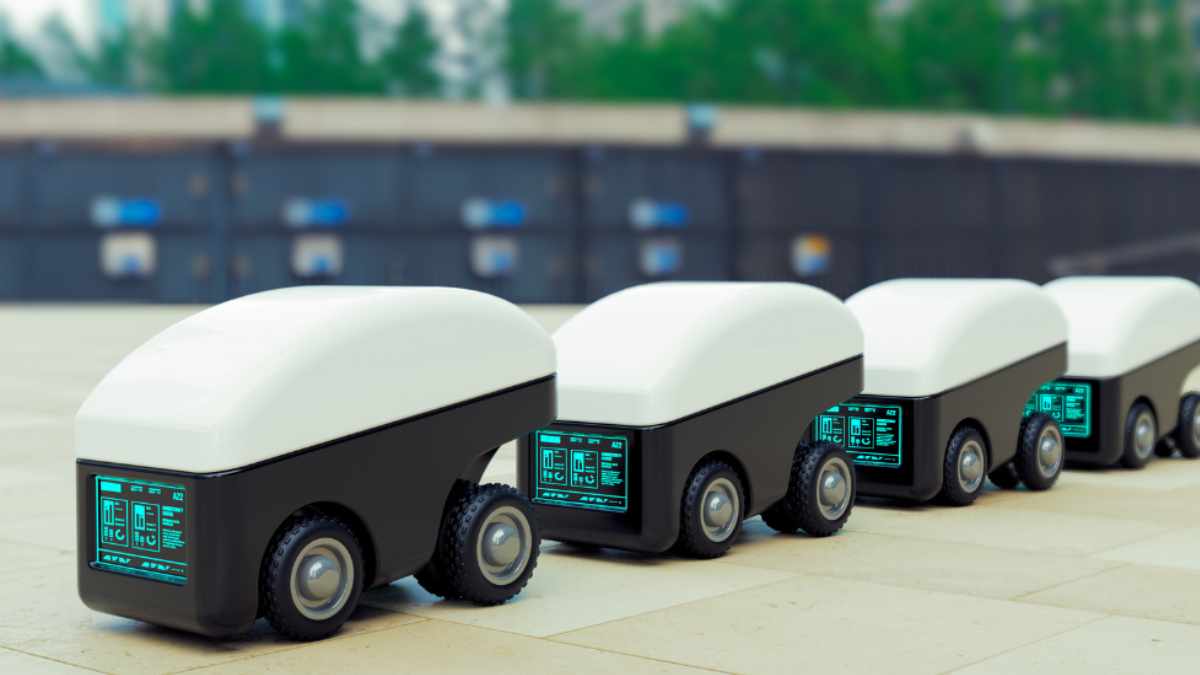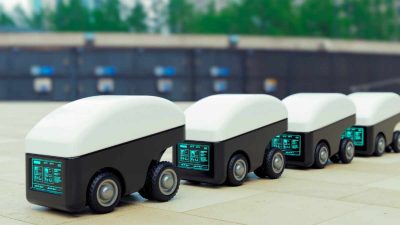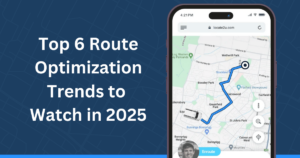
Contactless delivery robots offer convenience to customers and businesses and are also a matter of hygiene. A new study by IndustryARC has revealed that contactless delivery has become “a permanent fixture in consumer preferences.”
The Delivery Robots Market report has found that the demand for robots equipped with “advanced contactless delivery features” is expected to rise over the next six years (2024 -2030).
Understanding the implications of these advancements is crucial for logistics professionals to stay competitive.
Delivery Robots’ Market Growth and Forecast
The delivery robots market is projected to grow at a compound annual growth rate (CAGR) of 25% from 2024 to 2030. It’s expected to reach $2.2 billion by 2030, from around $0.5 billion in 2023.

The Driving Force for Robot Delivery
According to IndustryARC’s research, the skyrocketing demand for e-commerce and food delivery is driving the demand. This intensifies pressure on delivery networks, especially in last-mile delivery, from distribution center to consumer, contributing to the demand.
At the heart of this delivery type is a robot designed with artificial intelligence (AI) and sensor technology.
AI, Tech, and Robots
Autonomous delivery solutions are critical to the growth of the delivery robot market, which has been expanding rapidly lately.
Customers are increasingly looking for “fast and convenient delivery options.” Therefore, businesses are turning to autonomous robots to streamline last-mile logistics.
Equipped with advanced sensors, cameras, and AI algorithms, the robots can navigate sidewalks, crosswalks, and other urban environments safely.
Businesses are now focusing on speed to meet customers’ expectations. The competition in retail and food delivery is increasing fast.
Robots aim to improve delivery speed, reduce operational costs, and improve customer satisfaction. “With advancements in technology and regulatory support for autonomous vehicles, the adoption of delivery robots is expected to accelerate,” reads the study.
Robots in Urban and Suburban Areas
The food and beverage sector dominated the global delivery robot market, with a share of 28% in 2023. Companies like Starship and Serve Robotics are leading the autonomous last-mile delivery scene.
Starship Robots
Come rain or sunshine, Starship robots have completed over 6 million autonomous deliveries.
These robots travel at ~4mph (6.4kmph), which is equivalent to a pedestrian walking at a fast speed. Due to their advanced technology, they can also navigate around objects.
In February 2024, Starship Technologies announced it received a $90 million funding to expand and grow the brand. It has also installed Europe’s first wireless charging station for robots.
Serve Robotics
Shake Shack in Los Angeles has partnered with Serve Robotics and will be delivering burgers and shakes to Uber Eats customers.
The Robot Report says Serve Robotics president Touraj Parang wants to build and deploy 2,000 robots by 2024.
“We’ve done tens of thousands of successful deliveries with Uber Eats so far, with more than 300 merchants in our Los Angeles area.”
To learn more about what retailers and big brands are doing with robot delivery, read more about the convenience of robotic food delivery.
Cost Effectiveness and Food Safety With Delivery Robots
IndustryARC’s research has shown that companies find it more “cost-effective and easy” to employ delivery robots than humans. It’s a reliable service that accelerates operational efficiency.
“Food contamination is a major problem that requires the manufacturer’s attention, and the process needs to be taken good care of to ensure food safety.”
However, robot delivery, food safety compliance, and regulations can handle these standards more accurately. It can also “control and reduce the contamination due to less human intervention.”
To read the full report: Delivery Robots Market
About the author
Mia is a multi-award-winning journalist. She has more than 14 years of experience in mainstream media. She's covered many historic moments that happened in Africa and internationally. She has a strong focus on human interest stories, to bring her readers and viewers closer to the topics at hand.













